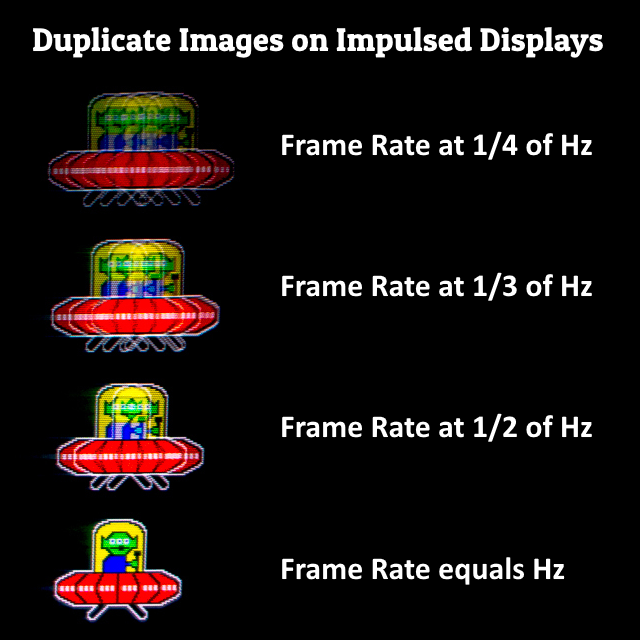Dalek wrote: ↑23 Oct 2022, 19:22
Chief Blur Buster wrote: ↑21 Oct 2022, 21:26
Currently, the XG2431 is still being manufacturered, but it's supply constrained. ViewSonic told me it was one of their most popular 240Hz screens, so it is possible that's why it is out of stock elsewhere.
Ah, ok. That makes sense. I will definitely pick one up in the future when it's available. I would buy it off of amazon.com, but I don't want to use a plug adaptor.
FYI -- no adaptor needed.
The USA and EU versions are perfectly identical -- the power supply is universal voltage with a detachable IEC-320 cable (those common computer cables). The only difference is a different IEC-320 detachable cable. The monitor and power brick is identical, with the sole exception of different detachable power cables.
Dalek wrote: ↑23 Oct 2022, 19:22
Ah, that's true. I thought it was one or the other when it came to buying a monitor (still trying to wrap my head around all of it), but yes, the ULMB technique can be switched on and off.
You weren't aware you could turn strobing on/off with your previous BenQ?
You never compared which looks better to your eyes?
You never experimented with mid framerate=Hz strobing before? (e.g. 120fps 120Hz on a high-Hz panel)
That usually looks more amazing than 360fps or unsynchronized-framerate strobing.
Dalek wrote: ↑23 Oct 2022, 19:22
So if I go for 360Hz+ it will work well at triple digits, but not below them?
If I go for 240hz it will work well at 60-240hz? (apologies if I'm misunderstanding your statement)
The above is referring to strobe, not brute framerate-based.
For non-strobed, 60fps or 75fps or 150fps should look relatively similar on both (only GtG-based differences).
Brute-framerate-based motion blur reduction is almost identical on all LCDs. Motion blur is equal to frametime, so 300fps has 1/300sec motion blur = 3.3ms of motion blur = 3.3 pixels of motion blur at 1000 pixels/sec or 6.6 pixels of motion blur at 2000 pixels/sec (MPRT blur, excluding GtG blur).
I will rephrase:
360Hz without Strobe Utility:
- Use brute framerate-based motion blur reduction down to (~1/frametime MPRT100% + whatever GtG the panel has), spray as much framerate as possible at it, since guaranteed minimum blur is frametime. Your minimum achievable motion blur will be (1/360sec) + (GtG).
- OR use strobe-based motion blur reduction at only above ~100-120Hz (depends on model), sometimes only presets
240Hz XG2431 with Strobe Utility
- Use brute framerate-based motion blur reduction (~1/240sec MPRT100% + whatever GtG the panel has), spray as much framerate as possible at it, since guaranteed minimum blur is 1/frametime. Your minimum achievable motion blur will be (1/240sec) + (GtG).
- OR use strobe-based motion blur reduction at any Hz in 0.001Hz increments from 59Hz through 241Hz
Also for brute framerate-based motion blur reduction method... Remember the worst (motion blurriest) 360Hz panels will have more motion blur than the best 240Hz. This is due to GtG differences. If you go 360Hz and want the clearest 360Hz if you can do framerates >240fps, then that's probably the XL2566K for you.


